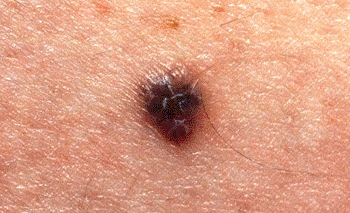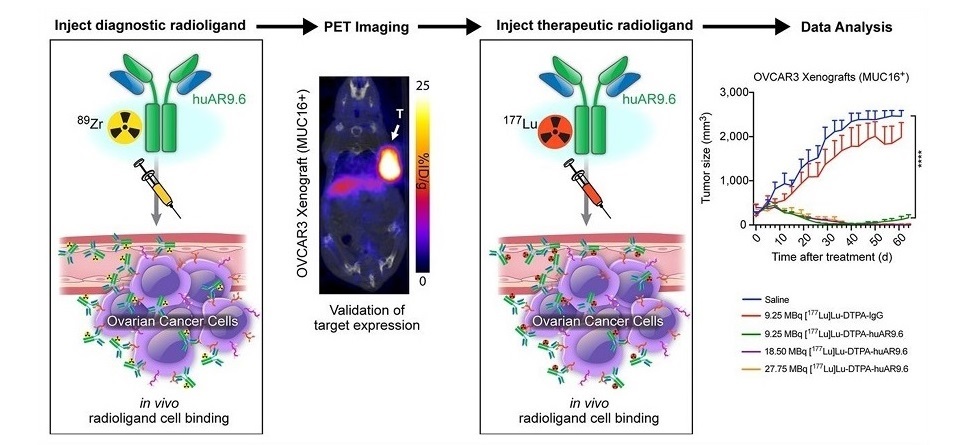Metastasized Melanoma Patients Can Benefit from SPECT Imaging
By MedImaging International staff writers
Posted on 22 Jan 2014
With low survival rates for patients with metastasized melanoma, effective staging and effective treatments are critical to extending life. New research has revealed the potential of newly developed radiopharmaceutical agents that contain benzamide for imaging of metastases and as a targeted systemic therapy. Posted on 22 Jan 2014
Malignant melanoma accounts for nearly 80% of all deaths related to cutaneous cancer. When discovered early, localized melanoma can be cured by surgical removal. However, this cancer displays a strong tendency to metastasize and has very low survival rates for patients, with fewer than 5% surviving longer than five years.

Image: Researchers have developed a specific single photon emission computed tomography (SPECT) radiopharmaceutical for malignant melanoma (Photo courtesy of Wellcome Images).
In the study published in the January 2014 issue of the Journal of Nuclear Medicine, researchers report the development a specific single photon emission computed tomography (SPECT) radiopharmaceutical for malignant melanoma designated 123I-BZA2. Imaging of patients with metastasized melanoma was then performed with both 18F-flourodeoxyglucose (FDG) positron emission tomography /computed tomography (PET/CT) and 123I-BZA2 SPECT to compare the accuracy in staging and restaging.
Eighty-seven patients were examined with a total of 86 metastatic lesions. The sensitivity, in the analysis of lesions, for 18F-FDG for diagnosis of melanoma metastases was higher than that of 123I-BZA2 (80% vs. 23%). The specificity of 18F-FDG, however, was lower than 123I-BAZ2 (54% vs. 86%). The sensitivity and specificity of 123I-BAZ2 for the diagnosis of melanin-positive lesions were 75% and 70%, respectively.
“We have demonstrated that 123I-BZA2 tumor accumulation was clearly correlated to melanin content of the melanoma metastases. Thus, 123I -BZA2 could be theoretically used for the diagnosis of melanoma metastases,” said Florent Cachin, MD, PhD, from the nuclear medicine department, Jean Perrin Cancer Center (Clermont-Ferrand, France), lead author of the study. “However, given its low sensitivity due to the high proportion of nonpigmented lesion in the natural course of metastatic melanoma, 123I- IBZA2 cannot be used for melanoma staging. Such results could appear discouraging, but the concept of melanin targeting may offer a real opportunity for therapy.”
In the study, the first use of a melanoma-seeking agent for therapeutic application was examined. Researchers used a theranostic strategy in which the same molecule was given first as a diagnostic isotope (123I-BA52) to identify the patients possibly benefiting from therapy, and then as a therapeutic radiopharmaceutical agent (131I-BA52) for those patients who would be helped. Twenty-six patients were imaged with 123I-BA52, and nine patients were selected for therapy with 131I-BA52.
Some of the patients treated with 131I-BA52 were found to have a survival rate of more than two years. The investigators also discovered that higher treatment doses would have been tolerated in these patients, as only moderate side effects were seen. “We believe that the tracer could be useful in the setting of a combination therapy in patients with metastasized melanoma, especially when applied in earlier stages of the disease where the melanin production is higher as compared to later stages of the disease,” noted Uwe Haberkorn, MD, a coauthor of the study.
Although new treatments are now available, the prognosis for patients with metastatic melanoma remains very poor. “Innovative strategies are necessary to improve patients’ survival. Research focused on innovating targeted-therapy reflects modern oncology, as new theranostic concepts. This strategy nicely illustrates the future of nuclear medicine oncology,” concluded Dr. Cachin.
Related Links:
Jean Perrin Cancer Center














